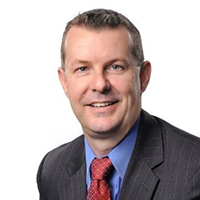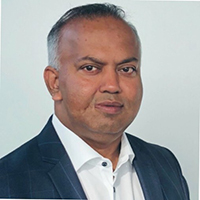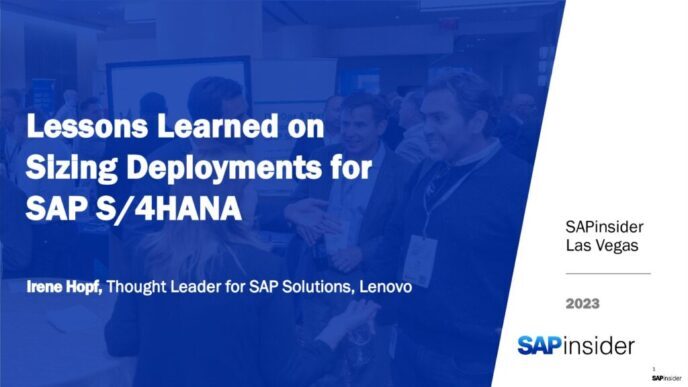Executives Embrace SAP S/4HANA For Cultural Innovation
By John Yuva, Editor, SAPinsider
Editor’s note: This article appears in SAPinsider’s 2021 September Executive Magazine.
A corporate melting pot serves to bring the workforce, technology, and innovation into closer alignment.
When we consider the workplace of 2019 verses today, there’s no question that we’re working in a new normal environment compared to pre-pandemic times. Virtual collaboration, measured growth, and a volatile marketplace define how many companies and their employees operate on a day-to-day basis. However, the tide is turning.
Enterprises are now embarking on technology and organizational initiatives to establish more robust operations for market growth. During the Technology Executive Forum (TEF) virtual meeting in July, research results shared from a variety of SAPinsider reports validate that companies are forging ahead with SAP S/4HANA and cloud investments as business stabilizes.
In fact, just over half of executives (51%) say that SAP S/4HANA is their most strategic SAP-focused investment in 2021 (“2021 CIO Perspectives: Strategic Business Priorities and the SAP Agenda,” March 2021), with 38% of responding companies reported that they have already implemented or are in the process of implementing SAP S/4HANA (“Deployment Approaches for SAP S/4HANA,” June 2021).
As technology initiatives take shape, organizational changes are also occurring to leverage new technologies and address trends in the marketplace. The TEF virtual forum featured several executives sharing their thought leadership and innovative approaches. The following explores some of the leading-edge trends and the strategic response of companies operating in the evolving new normal.
The Leading Edge: Organizational Structures Evolve, Requiring Shifts in Technology Capabilities
A leading trend shared by TEF members about their digital transformations was re-imagining the business and how IT can support it from the perspective of organizational structure and culture change.

Nuno Miller,
CIO, Sonae Fashion
How’s it happening: Custom personas drive agility and innovation. Customer preference and personalization means adapting to different consumer mindsets within the same or different industry. Nuno Miller, CIO for Sonae Fashion, witnessed this firsthand as significant mindset shifts occurred during the transition from traditional retail into fashion retail. Understanding your customer personas is critical if you’re to succeed as an agile operation capable of developing products to those specific audiences. Use of technology and digitization enables companies to recognize persona trends and incorporate those findings into new product development.

Thomas Buck,
CIO, Vitesco Technologies
How’s it happening: Lean IT for a new business landscape. When undergoing a transformation, it can be easy to try and swallow the whole elephant. Depending on the size of the company, the initiative can include integrating multiple SAP systems and other technologies. This was the case for Thomas Buck, CIO for Vitesco Technologies, when the company duplicated its parent company Continental Corporation’s IT landscape into its business. The result was dozens of SAP development systems to help the company transform from combustion engines to electrified mobility. To better manage this suddenly enormous IT landscape to a leaner IT footprint, Buck and his team focused on a single objective before taking the next step in their initiative. This made a significant difference in employee morale and motivation toward the overall goal.

Michael Mullis,
CIO, Ingevity
How’s it happening: Deploy agile services as customer demand dictates. Lean and agile is the goal for many enterprises. However, that’s difficult to achieve when companies do a “lift and shift” SAP implementation. This was the case for Ingevity, says Michael Mullis, the company’s CIO. The chemical company had several duplicate systems irrelevant to the industry. Mullis adopted a single target simplify, standardize, and optimize approach. While Ingevity looks forward to increasing its visibility into plant maintenance, repair, and operations, as well as next-gen technologies, such as artificial intelligence, machine learning, and advanced analytics, it’s doing so with an agile deployment model. The company will level up its deployment of these technologies as customer demand increases.

Christian Niederhagemann,
CIO, GEA
How’s it happening: Centralized IT for local collaboration and innovation. Centralization takes center stage as companies modify their operational models to bring services closer to the customer. GEA, a market and technology leader in the food and beverage processing industry, and chemical, pharma, and marine industries, developed a collaborative IT perspective across business divisions and levels. This initiative took place in tandem with a massive greenfield SAP S/4HANA implementation. Christian Niederhagemann, GEA’s CIO, explained that the organization adopted product-oriented pillars from a sales perspective, with IT aligned to support each of these areas on a local level. The company now employs a centralized support hub comprised of a mix of IT and businesspeople with limited hierarchies. The model should help foster greater collaboration and more innovation across the business.
The Leading Edge: Change Management for Sustainable Culture
Change of any kind is difficult. Executing change management in tandem with an SAP S/4HANA transformation or other technology integration is extremely daunting. TEF executives shared their insights into change management and coming out successful on the other side.

Milan Kumar,
CIO, ZF WABCO
How’s it happening: Workforce management to integrate positive and compassionate change. There’s no doubting the criticality of business and IT transformations. However, the best technologies in the world mean little if you lack employee adoption and utilization. Milan Kumar, CIO at ZF WABCO, an American provider of electronic braking, stability suspension, and transmission automation systems for heavy-duty commercial vehicles, encourages executives to be patient in their approach to integrate change. The “my way or the highway” conviction can quickly build resistance to change. Instead, build a symbiotic relationship between day-to-day operations, with progress reinforced through thoughtful workforce management.
Also, look to your “ambassadors” of change — those employees who are open to the shift, says Nik Giannakakis, CIO for Motor Oil Group. He advises focusing efforts on the 95% who embrace the change, preventing the other 5% from any negative influence. This helps set realistic expectations about the percentage of people adopting it.

Michael Mullis,
CIO, Ingevity
How’s it happening: Technology to support collaboration. With today’s virtual workforce, it’s easy to feel like you’re on an island, miles from civilization. At Ingevity, supporting virtual collaboration is critical. The company kicked off its newly integrated SAP S/4HANA business platform just as the workforce was moving to a virtual format. Mullis says ensuring the well-being of staff was essential to recognize and address employee burnout. With virtual meeting applications such as Zoom and WebEx, Ingevity implemented a camera-on meeting mentality to support collaboration and engagement. It also encouraged communication and a feeling of belonging with business teams dispersed.
The Leading Edge: Bridge the Gap Between IT and Business User Skill Sets
How is the traditional SAP team changing? The need to blend IT expertise with business acumen is growing as a skill set. This dual dynamic offers several advantages

Milan Kumar,
CIO, ZF WABCO
How’s it happening: IT and business user communication synergy. TEF executives shared multiple approaches for achieving synergistic IT and business collaboration. Sonae Fashion, for example, has adopted a hybrid model where external teams ensure that integration, processes, and end-user support run smoothly, while an expert team informs on added-value functions the company is introducing.
For ZF WABCO, there’s a merging of IT development with business orientation as a skill set. The IT community develops its amazing solutions while also conceptualizing and communicating the applicability of those solutions within the business. By understanding the business challenges, IT can create technology to bridge the gap between the two.

Christian Niederhagemann,
CIO, GEA
How’s it happening: IT as consultant and SAP architect. With the rate of change in technology, having an IT staff to track the trends and contribute to business planning conversations is critical. At GEA, the company is training IT to work with demand managers to understand what’s coming next, Niederhagemann says. It’s a concept of more consultative IT to support the business. The traditional IT coder is now a consultant who can serve as an SAP architect for future upgrades and integrations.
The workforce experienced and emerging technologies are forever intertwined. Companies are positioned to ensure the new normal addresses workforce strategies, technological integration, and business innovation.
What does this mean for SAPinsider Executives?
- Forward momentum with intention. One of the first words spoken during the virtual meeting to describe market trends was “acceleration.” Speed and agility, along with the concept of failing fast, are undeniably enabling business success today, and yet leaders must get comfortable with holding two opposing concepts in mind: Sprint ahead, but not at the expense of intention. Take time to create a culture and organizational structure that support skillsets and decisions made toward your end goal.
- Invest in the workforce using complementary IT. Leaders will need to re-think things like employee engagement and burnout, hiring and onboarding, visibility, and flexible work hours, all against a backdrop of enabling technology. Companies (71%) are ultimately planning to invest in a comprehensive employee experience management solution, according to SAPinsider’s “State of Human Experience in the Workplace Benchmark Report” published in June.
- Shatter the wall between IT and the business. Leading executives are exploring how to put this concept into action by infusing a business orientation attitude and a consultative approach into their IT teams, and introducing IT’s knowledge of digitization to business teams so they can do their jobs independently. The success stories shared during the virtual meeting and those published as part of SAPinsider’s Member and Executive Insight series, including companies like Delivery Hero, Lloyd’s Register, and Walgreens Boots Alliance demonstrate that an alignment of IT and business characterizes today’s definition of innovation.








